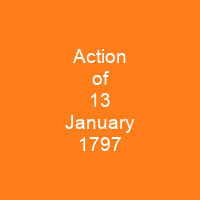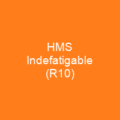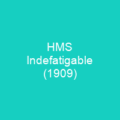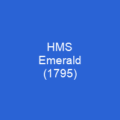The Battle of 13 January 1797: A Naval Encounter That Changed History
Imagine a stormy night off the coast of Brittany, where two mighty ships clashed in a battle that would echo through naval history. The Droits de l’Homme, a French ship of the line, faced off against HMS Indefatigable and HMS Amazon, British frigates patrolling the seas during the turbulent times of the French Revolutionary Wars.
The Prelude to Battle: A Failed Irish Invasion
Before we dive into the battle itself, let’s rewind a bit. In December 1796, a French expeditionary force set sail from Brest with the grand ambition of invading Ireland. The fleet included 17 ships of the line and 27 smaller warships, but fate had other plans. Poor coordination and violent weather turned this grand endeavor into a fiasco. Admiral Bouvet and General Grouchy led their fleet to Bantry Bay, only to be forced back to France due to severe weather conditions.
The Engagement: A Battle of Wits and Weather
On the morning of 13 January 1797, Commodore Pellew was on his way back to Brest with HMS Indefatigable and HMS Amazon. Through a thick fog, he spotted the Droits de l’Homme. Initially, Pellew decided not to engage, considering himself outnumbered and surrounded by the French fleet. However, as the weather worsened, the chase continued.
The battle was a test of both skill and luck. The Droits de l’Homme had an unusual design that prevented it from opening its lower gunports, significantly reducing its firepower compared to the British frigates. Despite this disadvantage, the French ship managed to engage in a fierce exchange of fire with Indefatigable and Amazon.
The engagement lasted for more than 15 hours, with both sides trading volleys under heavy seas. By nightfall, the Droits de l’Homme was in severe difficulties, its mast broken and crew casualties mounting. As the winds increased, the ship lost control and was swept onto a sandbar, where it lay on its side, battered by waves.
The Tragic Aftermath: A Wrecked Ship and Lost Lives
By 20:30, the British frigates returned to the wreck of the Droits de l’Homme. The battle continued until 04:20 when land was spotted at 2 nautical miles to leeward. Pellew immediately turned seawards to escape the shore, but both ships were unable to avoid it due to damaged rigging and drifting into Audierne Bay.
Amazon struck a sandbank, while Droits de l’Homme was virtually unmanageable and broke off her remaining mast after striking a sandbank at 07:00. The ship lay on its side in a stormy bay, with large waves breaking over it. The crew of Amazon was trying to reach the shore, while Indefatigable rounded the Penmarck rocks.
On board Droits de l’Homme, discipline was maintained by Reynolds, who ordered boats to be launched and rafts built. However, six men disobeyed and were swept away by the current, drowning. The ship’s hull was eventually breached, flooding the interior and causing widespread destruction.
The Rescue: A Race Against Time
A small boat carrying British prisoners managed to reach shore on January 15th, prompting a mass launching of small rafts from the wreck. However, none of these craft survived the passage. Over the next few days, hunger and panic took over among the survivors, who began to succumb to exposure and dehydration.
On January 17th, a French naval brig arrived at the scene, sending boats to rescue survivors. Many men were too weak or crowded into the small boats, but 150 were eventually rescued. The following morning, only 140 survivors remained, having lost many more during the night.
The last two people to leave the ship were General Humbert and Commodore Lacrosse, who were taken to Brest for medical treatment and care. All surviving prisoners from the Cumberland were released and returned to Britain in recognition of their efforts to save lives during the shipwreck.
Conclusion: A Battle That Changed Naval History
The action of 13 January 1797 was a tragic yet pivotal moment in naval history. It showcased the resilience of human spirit and the harsh realities of war at sea. The battle is recognized among the actions rewarded with the Naval General Service Medal, with clasps awarded to British participants still living in 1847.
As we reflect on this historic encounter, it serves as a reminder of the unpredictable nature of warfare and the enduring impact of naval battles on history. The Droits de l’Homme may have met its end, but its legacy lives on through the stories of those who fought and survived.

You want to know more about Action of 13 January 1797?
This page is based on the article Action of 13 January 1797 published in Wikipedia (retrieved on November 28, 2024) and was automatically summarized using artificial intelligence.







